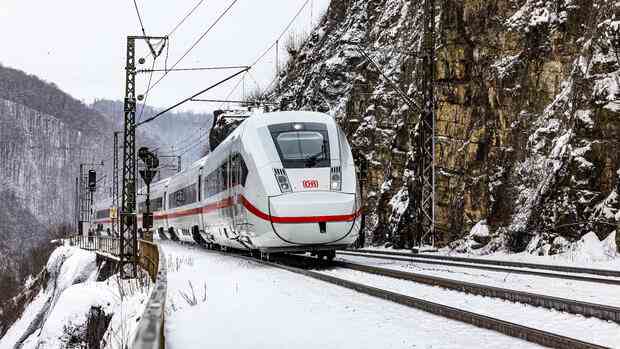The federal government wants to bring more traffic onto the rails.
(Photo: IMAGO/Arnulf Hettrich)
Berlin With an extensive package of measures, the federal government is planning to make the rail system fit for the future from the ground up. In the future, the system should be “in the overriding and public interest” and thus receive priority in approvals and legal disputes. The federal government should also finance the rail network differently in the future.
An acceleration commission headed by the government’s rail transport commissioner, Michael Theurer (FDP), made these and other proposals in its final report. The report is available to the Handelsblatt and is to be handed over to Transport Minister Volker Wissing (FDP) on Tuesday.
The commission includes representatives of Deutsche Bahn AG, its competitors, the planning and construction industry and several associations. They should find solutions to get the rail network of the federal company, which has been privatized since 1996 and long since heavily indebted, back on track.
The Commission recommends a “modern rail law” to implement all proposals. This includes simplifying proofs of economic viability and proof of use and streamlining approval procedures.
Top jobs of the day
Find the best jobs now and
be notified by email.
The law is also intended to define “the framework conditions for a new financial architecture, with the aim of achieving five times faster implementation of electrification and digitization measures than today”.
Hundreds of train cancellations due to the desolate rail network
The federal government is currently paying grants to the railways to build new routes. In addition, the federal government and the railways agree on maintenance measures in a service and financing agreement. There are also funding programs, for example to renovate train stations or digitize the rail network. All of this creates “disincentives”, explains the Commission.
>> Read here: “We’re pissed off because nothing works” – The German rail network is on the verge of collapse
One thing is certain: the previous concept of leaving the rail network in the ownership of the railways and financing it from the federal budget as well as from the railways’ own resources and from track charges was not crowned with success. The network is in a desolate state, hundreds of trains are canceled or come too late – both in passenger and freight traffic. “The railway infrastructure in Germany is outdated,” sums up the commission. The political goal of transporting twice as many people and significantly more goods by rail by 2030 is considered unrealistic.
The commission recommends that the federal government set up two funds. “The maintenance, replacement and modernization of the existing infrastructure and the operation of the network will be financed from the fund for the modernization of the existing network,” says the final report.
Hundreds of Deutsche Bahn trains are late.
(Photo: IMAGO/Nikita)
The traffic light coalition has set itself the goal of founding an infrastructure company geared towards the common good under the umbrella of Deutsche Bahn AG. According to the Commission, it should be financed largely from the funds and invest “on the basis of rail policy goals”. The company is to replace the current network division of Bahn AG by January 1, 2024 at the latest. However, the report now refers to the “first quarter of 2024”.
Does the revenue from the truck toll flow into the fund?
How the funds will be financed was disputed until the very end. There had been an intensive debate in the commission as to whether additional revenue from the truck toll should also flow into the new system, as participants reported. This was mostly rejected.
Now the report only says: “Existing financing programs are assigned to the individual funds based on content”, i.e. budget funds and track charges. The Funds are intended for “a long-term period”.
In the short term, more capacity is to be created on the network. A new lever is to completely rehabilitate particularly busy routes and not only to rehabilitate individual parts of the system when they have also reached their economic age limit. The Commission hopes that “the route will no longer have to be closed for a long period of time”.
>> Read here: Coalition agrees on higher truck toll – CO2 surcharge only from 2024
For the new grid company, “customer-friendly construction” should be the focus, with fewer closed routes and “modular and quick-build systems”. In addition, clients, planners and construction companies are to work closely together in ten pilot projects.
The Commission does not consider it beneficial to rehabilitate individual sections of track at different times.
(Photo: dpa)
They should “focus their full performance and innovative capabilities on the optimization, rapid implementation and efficient operation of the construction project,” it says, with a view to digital construction, so-called Building Information Modeling (BIM). In this way, projects would be “significantly accelerated”.
The Commission also recommends speeding up planning and approval procedures. In the future, time-consuming approval procedures should no longer be necessary for points, overtaking tracks or electrification, and it should no longer be necessary to provide proof of economic viability. So far, the benefits have always outweighed the costs. The Commission has identified 89 concrete measures on existing routes alone, which can provide more space on the rail network in the short term.
More: Many open questions until the start of the Deutschlandticket
